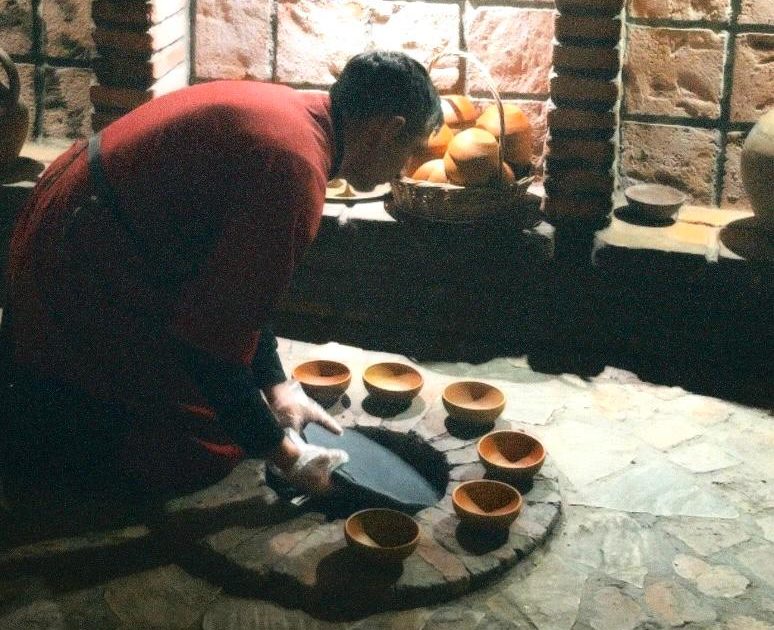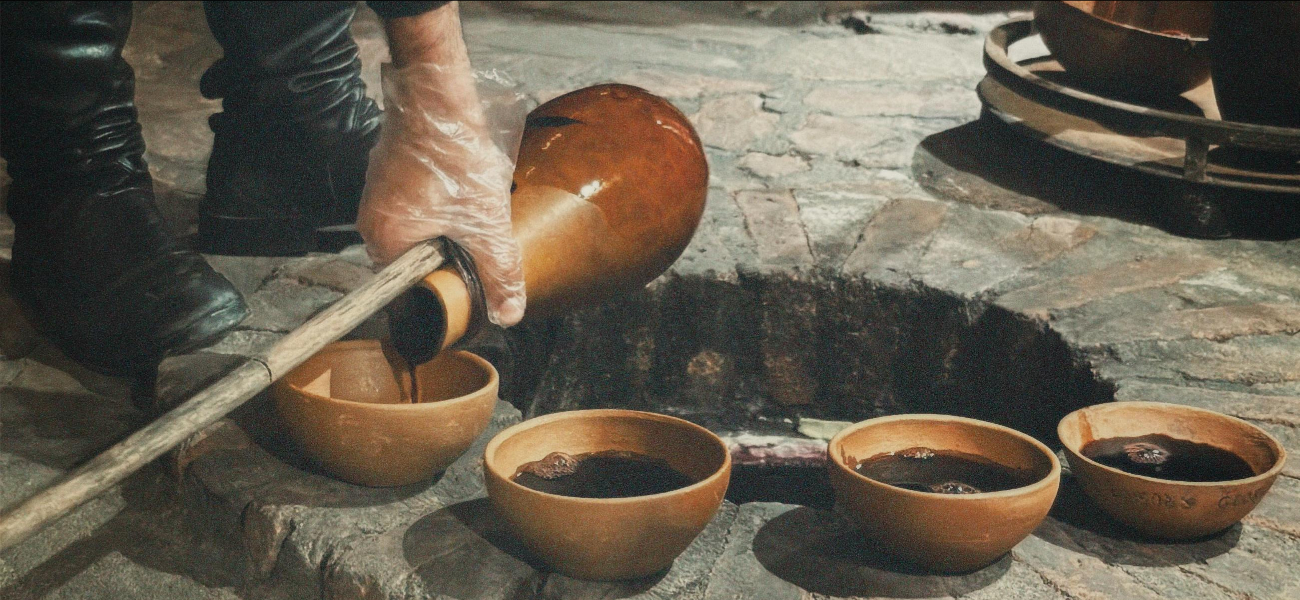The opening of a Qvevri is a ritual that you must take part in if you wish to fully immerse yourself in Georgian culture and traditions.


The opening of a Qvevri is a ritual that you must take part in if you wish to fully immerse yourself in Georgian culture and traditions.
In 2017, the entire world began talking about Georgian winemaking and its centuries-old traditions. Archaeologists discovered a qvevri in ancient villages located 50 kilometers from Tbilisi, which contained traces of wine and microscopic particles of grape pollen. The Qvevri, dated to 8,000 years ago, became significant evidence that Georgia is the birthplace of wine. Additionally, in 2013, UNESCO recognized the unique tradition of making wine in Qvevri as an Intangible Cultural Heritage, further solidifying Georgia’s status as the homeland of wine.
It is worth noting that the discovered Qvevri stands out for its special cultural significance — its walls are adorned with sun symbols, grapevine ornaments, and simple yet symbolically rich depictions of animals. These decorations were not merely aesthetic; they reflected the perceptions and beliefs of the people of that time.

It is kept at the National Museum of Georgia
Fortunately, the tradition of making wine in Qvevri — and, accordingly, the craft of producing Qvevri — is still alive in Georgian culture today. In various regions of Georgia, especially in Kakheti, Imereti, and Guria, families continue to honor the path of their ancestors, following the ancient methods of handcrafting Qvevris from clay and making wine in them. This tradition is not only related to winemaking but also to cultural memory, which is passed down from generation to generation as a treasured legacy. Crafting a Qvevri is a complex and labor-intensive process that requires exceptional skill and patience.
Clay extraction and preparation – Qvevris are made from a specific type of clean, highly plastic clay found in certain regions of Georgia. This clay is carefully purified of stones and unnecessary impurities. In the next stage, the artisan begins manually or foot-kneading the clay to make it elastic and homogeneous. This ensures the strength of the Qvevri walls and helps prevent cracking.
Qvevri construction – The artisan adds a 5–10 cm high layer to the Qvevri’s walls every few days. This process is slow because each new layer needs time to harden properly before the next one is added.
Qvevri firing – Once the Qvevri takes its final shape, the natural drying process begins, lasting 1–2 months. After drying, the Qvevri is placed in a deep earth kiln and fired at a temperature of approximately 900–1,100°C. This multi-day stage is the most critical, as uneven temperatures can damage the vessel.

Qvevri Opening Ceremony at the Kvareli Wine Cave
The Qvevri has laid the foundation for many traditions in Georgian culture. Among them, the most spectacular and impressive is the ritual of opening the Qvevri. In the past, during springtime, Georgian families would taste the wine— the result of months of hard work— and offer thanks to God. The opening of the Qvevri always takes on a festive atmosphere and is accompanied by traditional folk songs.
Visitors to the Kvareli Wine Tunnel can become part of this tradition by attending the Qvevri Opening Ceremony, making toasts, sipping wine from clay cups, and enjoying live performances of traditional polyphonic singing. But that’s not all. Guests can also try their hand at crafting miniature Qvevris from clay to take home as souvenirs from Georgia.
By bringing these Georgian traditions to life, we create unforgettable experiences for our visitors.
